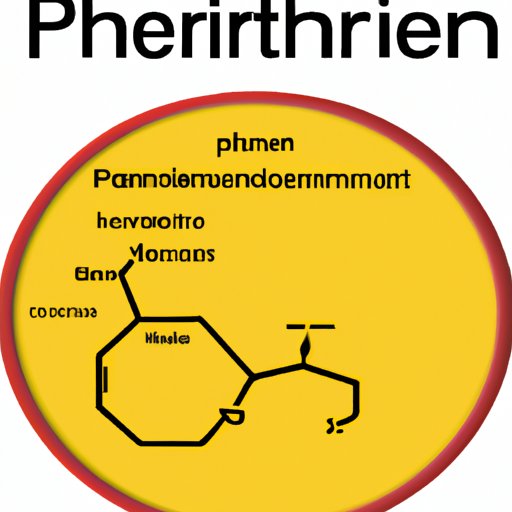Introduction
Permethrin is a type of synthetic insecticide used for controlling pests in the home, on crops, and in other areas. It is made from an organic compound called pyrethrin, which is derived from chrysanthemums. Permethrin works by disrupting the nervous systems of insects, causing paralysis and death. In this article, we will explore how permethrin works, its different uses, benefits, risks, and more.

Explaining the Science Behind How Permethrin Works
Permethrin has a chemical structure similar to pyrethrins, but it is more stable and longer lasting. Its chemical formula is C21H20Cl2O3. The active ingredient in permethrin binds to sodium channels in the nerve cells of insects, disrupting their nervous system and causing paralysis and death. It is effective against a wide variety of insects, including mosquitoes, fleas, ticks, ants, flies, moths, and spiders.
Examining the Different Uses of Permethrin
Permethrin is commonly used in households to control pests such as mosquitoes, fleas, ticks, ants, flies, moths, and spiders. It can be applied to fabrics and surfaces, or sprayed directly onto pests. It is also used in agriculture to control insect pests on crops, as well as in public health programs to control disease-carrying pests like mosquitoes.

Investigating the Benefits of Permethrin
One of the main benefits of permethrin is its effectiveness against insects. It is one of the most widely used insecticides in the world, and it is highly effective at killing a wide range of pests. Additionally, permethrin is relatively low in toxicity to humans and pets, making it safer to use than some other insecticides.

Understanding the Risks and Side Effects of Permethrin
Although permethrin is generally considered safe for humans and pets, there are some potential side effects that should be taken into consideration. These include skin irritation, allergic reactions, and breathing difficulties in sensitive individuals. Additionally, permethrin can be harmful to the environment if not used properly, so it is important to follow all safety protocols when using it.
Comparing Permethrin to Other Insecticides
When comparing permethrin to other insecticides, it is important to look at the active ingredients. Permethrin is a synthetic pyrethroid, while many other insecticides contain organophosphates or carbamates. Additionally, permethrin is generally considered to be more effective than other insecticides, making it a popular choice for pest control.

Looking at the History and Development of Permethrin
Permethrin was first developed in 1974, and has since become one of the most widely used insecticides in the world. It is used to control a variety of pests in both residential and agricultural settings, and its effectiveness and low toxicity make it a popular choice for pest control.
Investigating How Permethrin is Used in Agriculture
Permethrin is used extensively in agriculture to protect crops from insect pests. It is applied to the foliage of plants, where it kills pests on contact. It is strictly regulated in many countries due to its potential hazards, and safety protocols must be followed to ensure proper use and minimal environmental damage.
Conclusion
In conclusion, permethrin is a popular and effective insecticide used to control pests in the home, on crops, and in public health programs. It works by binding to sodium channels in the nerve cells of insects, causing paralysis and death. It is low in toxicity to humans and pets, making it a safe choice for pest control. However, it can be harmful to the environment if not used properly, so it is important to follow all safety protocols when using it.
(Note: Is this article not meeting your expectations? Do you have knowledge or insights to share? Unlock new opportunities and expand your reach by joining our authors team. Click Registration to join us and share your expertise with our readers.)
